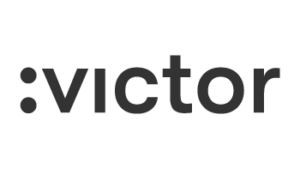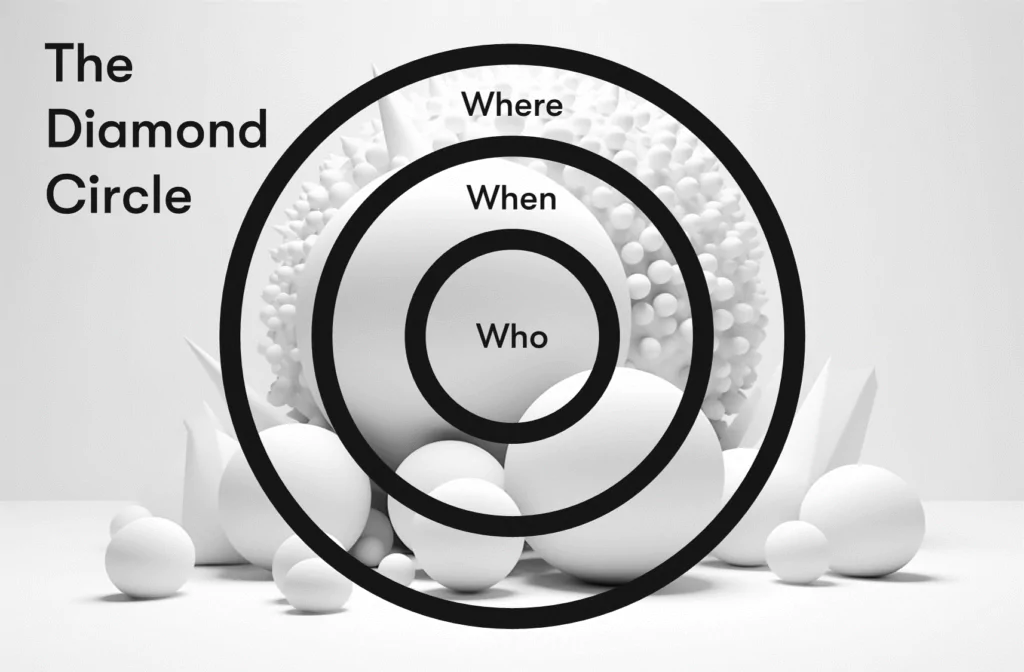
Debunking strategy woo woo: The Golden Circle
- The Golden circle, explanation and origin.
- What is the Golden Circle?
- Authour claims the Golden Circle would be supported by science.
- Analyzing the lack of scientific support for the Golden Circle.
- Cherry picking.
- Straw man.
- Anecdotal evidence.
- Barnum effect.
- An alternative to the Golden Circle.
- Is the Golden Circle useless bullshit?
- Should you trust this article?
- Final courtesy from myself
1.
The Golden Circle, explanation and origin
1.1
What is the golden circle
Best selling author Simon Sinek starts his conference saying “How do you explain when other are able to achieve things that seems to defy all of the assumptions? For example, Why is Apple so innovate? […] Why is that Martin Luther King led the Civil Rights Movement? […]” adding that apple is yet just a company among other and Luther King was just a man among other, and then to continue “There is a pattern, as it turns out, all the great inspiring leaders and organizations in the world, whether it’s Apple or Martin Luther King or the Wright brothers, they all think, act and communicate exactly the same way, and it’s the complete opposite to everyone else. All I did is codify it”. Sinek proceeds to draw figure below
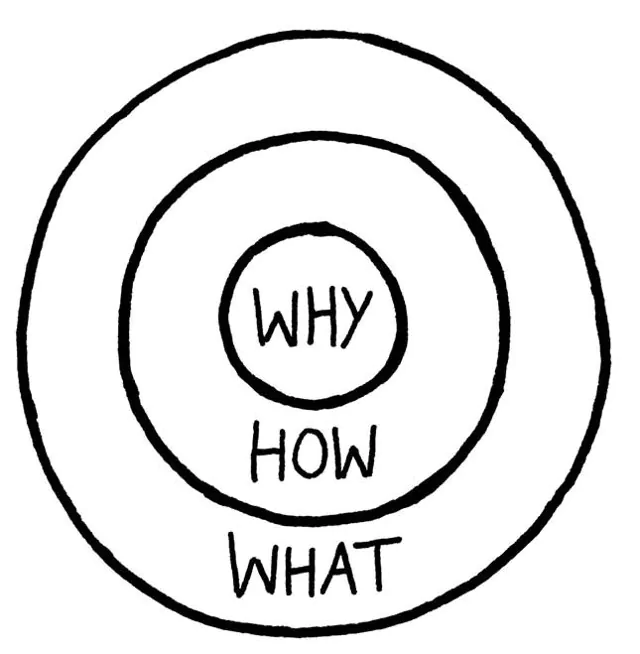
The Golden circle asses that some individuals and brands are more engaging/inspiring/persuasive than others because of their ability to communicate the three following layers:
- Why do you do what you do?
- How do you plan to do what you do?
- What will you do to overcome your “why”
In that order, otherwise it doesn’t works, says the author.
An application of the golden circle: “I’m hungry (why) so I will bake a cake (how) and eat it (what)”. Can you feel how persuasive I am now?
Did Sinek discovered THE framework to become the new Martin
Luther King? Let’s dive into the foundations of the golden circle.
1.2
Author claims the golden circle would be supported by science
In his TED talk like as in his book, Sinek proceeds to explain that the golden circle isn’t based on his opinion, it is rather based on biology. Sinek explains that our brain is divided in layers, each of them dedicated to a special task. According to Sinek, the external layer (neocortex) would be specialized in the “what level”, since it is “responsible for all of our rational and analytical thought and language”. The limbic brain, represented by the middle two section would be the “how” part of our brain, since “our limbic brains are responsible for all our feelings, like trust and loyalty“. According to its author, the golden circle is therefore based on the very functioning of the brain and this would be the reason why it works. But is it really the case?
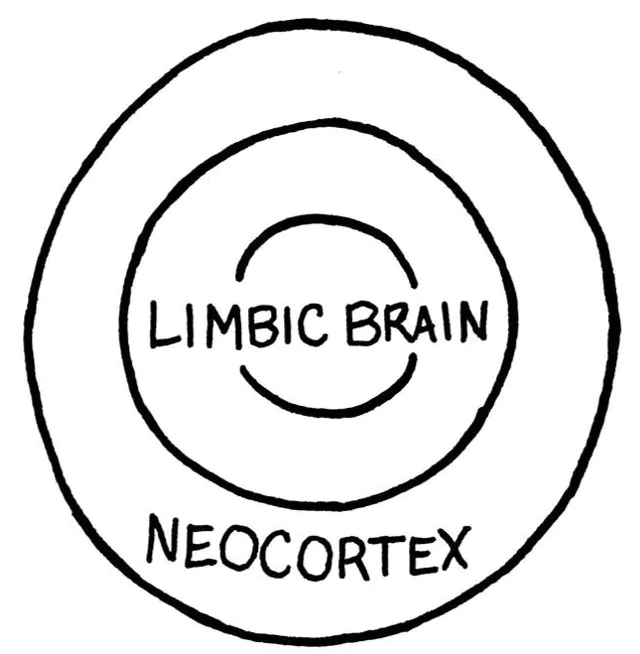
2.
Analyzing the lack of scientific support for the Golden Circle
2.1
Cherry picking
Saying “it’s biological” highlights a certain lack of scientific understanding. Human mechanisms aren’t mono-causal, they are the result of several parameters aggregated together and each of them related to different scientific fields. For instance, one subject like “emotions” can be studied under the scope of sociology [e.g. 2], cognitive psychology [e.g. 3], social psychology [e.g. 4], neurobiology [e.g. 5], anthropology [e.g. 6], etc… Each field brings an explanation of the subject under a different angle. Studied under the prism of neurobiology, we may be able to understand what biochemical process underlies emotion arousal, for instance. But we may not be able to fully understand how they are transmitted from an individual to another, what context is favorable to emotion arousal, what behavioral or cognitive outcome does it trigger, etc… There is no hierarchy such as biology is more explicit than psychology, which is more explicit than sociology. Scholar fields are complementary, not interchangeable, and everything in the human behavior is not due to our genes [17].
Studying an individual’s behavior under the prism of biology only is irrelevant. And yet, it would have been necessary to give a proper biological argumentation in the first place, which is not a condition met here (see 2.2 thereafter).
Selecting a single field or study to explain a subject that would require a cross-disciplinal argumentation is a bias that has a name: cherry picking [7].
2.2
Straw Man
In his TED talk, Sinek states that his golden circle is supported by “the tenants of biology”. Even though he stays very vague in his conference, additional information can be found in his book [1]. In the 4th chapter, the one introducing his “this is not opinion, this biology” argument, there is one neurobiology source[8], other sources are just anecdotes unrelated to science. An entire neurobiology-oriented chapter having only one neurobiology-related source? This is rather weak… But why not after all, maybe it’s a very good study. Unfortunately, this makes no importance, since the source Sinek uses doesn’t even validate his writings.
What the hell happened Simon? My personal hypothesis is that Sinek misinterpreted sentences in this source that were formulated ambiguously. For example: quoting page 66 “[…] The superior temporal sulcus (STS) […] serves as the convergence point for two separate visual streams starting at the occipital (visual) cortex. The top stream, informally known as the “where” pathway, is concerned with motion; the bottom stream, the “what” pathway, enables us to recognize what we’re seeing at any given moment.” although when read quickly it could look like it, this does NOT say that the neo-cortex would be “the what part”, it’s more subtle than this.
Notwithstanding the misinterpretation, consider his thesis made short:
- (A) The neocortex is the brain region of reasoning and more, (B) hence the brain region of what
- (A) The Limbic system is the brain region of low order emotion and it has no capacity of language, (B) hence the brain region of how and why
And so what? There is absolutely no link between (A) and (B). The green part seems indeed to be true (at least it’s written in Wikipedia), but the red part is just proofless bullshit that was added on top of something true. (A) does not causes (B), and the source invoked in Sinek’s book does not even suggest it. And after all, why wouldn’t be some “why” more appealing to our “rational brain” and some “what” more appealing to our “emotional brain”? It appears that the “biological” aspect of the golden circle is in fact based on a source that has been misunderstood. Also note that I did not check the validity of Sinek’s source, which treats of a domain that goes beyond my expertise. In addition of being misinterpreted this source could also be wrong or obsolete (it was published in 2009).
We did not talk about all the other things that go wrong in this “biological” argument, but to wrap it up: No Simon, this wasn’t “biology”, this absolutely was your opinion. Transforming or misinterpreting the content of a source and debating from this changed version is a bias that has a name: A straw man [9].2.3
Anecdotal evidence
All along his book and his conference, Sinek selects anecdotes and stories that allegedly illustrate his model. This wouldn’t have been a problem if he had made sure he provided relevant proof for his thesis in hindsight. But as explained in part 2.1, and 2.2, this condition is far from being met. Stories make good examples, but bad evidence. And at this point, we are still waiting for valid evidence.
Speculating conclusions based on anecdotes or individual experiences is far from a thorough approach. Because:
- for one story that tells something, you will find ten other stories telling the opposite. In this case, how many people have followed the golden circle unsuccessfully (e.g.: countless of unsuccessful politicians)? How many people have been successful and not following the golden circle (e.g.: any anonymous artist like Banksy or the Daft Punk whose motivations will stay forever unknown)? This is also a fallacy named survivorship bias [10]. It consists in selecting successful samples while omitting failed samples that went through the same process (in this case, the golden circle). How many people were Steve jobs before Steve jobs and yet, never became Steve jobs?
- as clever as on may be, human brain frequently commits biases and heuristics as a matter of quick decision making and saving energy [11]. Therefore, there is a difference between reality and one’s perception of reality. A story is not worthless per se, but it won’t ever worth more than a simple testimony.
Using personal observation and stories to deduce something that would rather ask for subjectivity-free and methodological studies is a bias that has a name: Anecdotal evidence[12].
2.4
Barnum effect
Using “why”, “how” and “what” is not a secret weapon “all the great inspiring leaders and organizations in the world, [use] the same way, and it’s the complete opposite to everyone else”. It’s a basic process of arguing that you can hardly escape when explaining something to someone. I probably do it every day, you probably do it every day, and there is no biological proof that doing it in a specific order, or removing/adding another question would invariably change your persuasive power. There is no proof either that this behavior would be any specific to inspiring and successful people/brands.
Proceeding such as 1) explaining/analysing why there is a problem 2)finding how to solve it 3) defining what actions to implement immediately isn’t the masterplan of a mass persuasion genius. It is probably the first reflex of any basic random guy trying to get shit fixed. This Golden circle takes something everybody does, and it makes it look like it is very exclusive to one category of person.
Making descriptions sound very specific to someone, although it could also be applied to anyone else is a bias that has a name: Barnum effect [13].
3.
An alternative to the Golden circle
Let’s demonstrate by the absurd the inherent flaws of the golden circle. I will endeavor to use the same biases as for the golden circle to create my very own model.
Folks, how do you explain that the computer was invented before Apple came with it, and yet it did not take over as for Apple? How do you explain Barack Obama became the first black president also he wasn’t the first black man doing politics? There is a pattern, as it turns out, all the great inspiring leaders and organizations in the world, whether it’s Steve Jobs or Barack Obama, they all think, act and communicate exactly the same way, and it’s the complete opposite to everyone else. All I did is codify it. I named this: the Diamond Circle.
- Who -> characteristic that makes you an authority figure for the good audience
- When -> Being at the right time to make your ideas more impactful
- Where -> Being at the good place to make your ideas more impactful
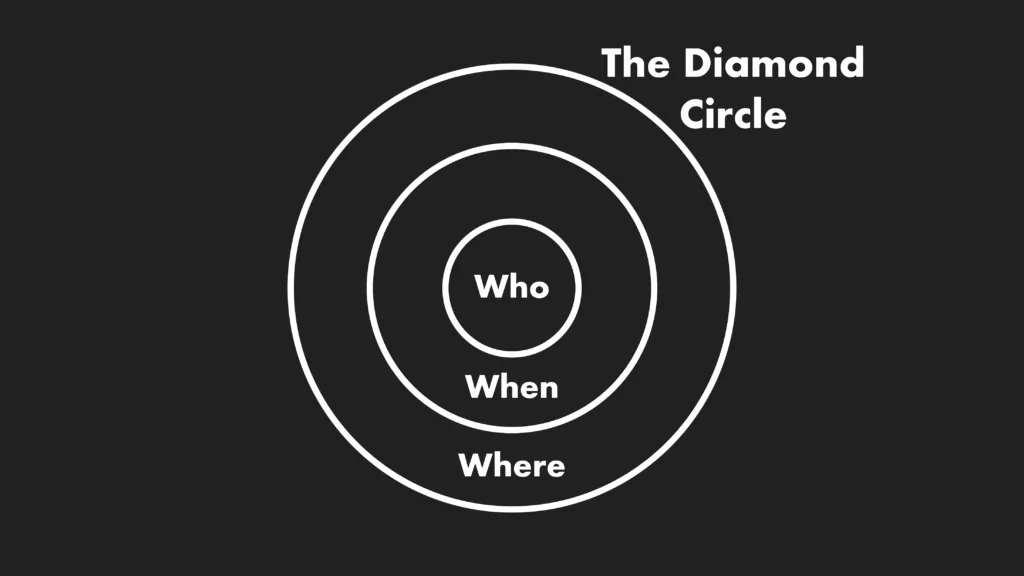
And the best part is, it’s not my opinion, it’s biology [14] ! The brain is divided in layers and, our newest brain, the medial prefrontal cortex is our social brain, hence, it is the area of our mind specialised with “who”. Our limbic brain, however, is our emotional brain. Because emotions are so dependent on our feeling of “psychological distance” [15] -that is, how far away we feel from a subject matter (in term of time and place)-, Limbic brain is also the brain part specialised in “When” and “Who”!
If Steve Jobs wasn’t the good person at the good time at the good place for the good audience, he would never have been Steve Jobs! People don’t buy what you’re talking from, they buy who you are talking from! It even has a name: authority argument. And you better do this at the right time and at the good place. Otherwise you will end up like all these guys that were Steve Jobs before Steve Jobs but never became Steve Jobs.
4.
Is the golden circle useless bullshit?
The golden circle initial claim was more or less “this is what you need to be persuasive”. Judging by the lack of evidence it is underlined with, this goal stays unreached. Part 2. of this article largely showed that, at best, the golden circle simply describes one basic approach of someone explaining something. Sinek has failed to support his model validity, and nothing seems to prove that this would be THE method to be super-persuasive. Applying a basic rule of critical thinking named “burden of proof”: what is assessed without proof can be refused without proof [16]
Now, notwithstanding the obvious lack of fundamental rigor that made it come to life, is there any relevant usefulness left to the golden circle?
Would you say that without this circle you would never have guessed that “what”, “why” and “how” may be important questions to your audience? If yes, then the golden circle may not be so useless to you after all. However, because its creation was so flawed you must consider some details:
Even though these “why”, “how” and “what” may be important brand aspects to address to customers, what proves you that these questions are so important to them, compared to other factors? What proves you that there aren’t any other parameters (like when, where, who, factors that regard perceived authority, conformity, choice architecture, cognitive availabilities, memory, social class, bottom-up factors, top-down factors, …) that prevail over this golden circle?
One could also doubt the design of this golden circle. Since we know this whole neurobiology argument was bullshit, what additional value does this 3 layer appearance brings anyway? And if it does bring anything, aren’t there any visualizations that would better meet this objective, like a simple table, a pie, a bullet list? At this point, it is more a matter of proper graphic design/data visualization rather than pure strategy. We are getting lost into giving a meaning to something that doesn’t have one in first place.
Finally, note that I did not take the time to debunk everything unjustified in this model. A lot more things about it are arguable. Like: why would it be important to first address the limbic brain anyway? Why would it be necessary to address all sections of the brain anyway? Etc… But Brandolini’s law, everyone!
Consequently – and pardon my Dutch- I think we have enough arguments to confidently conclude: the golden circle is a based on bullshit.
5.
Should I trust this article?
Of course you should, because biology !
No, seriously you shouldn’t. This is the very point of what is written in this article: stop believing what you are told just because it feels logical. Doubt what you would like to believe, doubt what you think you know, think against yourself. Critical thinking and metacognition methodologies should be the basic competence of all strategists. Be vigilant of the things you want to trust, because qualified people making mistakes exist -maybe Sinek is one of them- and ultracrepidarian people exist -maybe Sinek is one of them-. Don’t believe in me, don’t believe in Sinek, don’t believe in yourself, don’t believe, verify.
6.
Final courtesy from myself
Therefore, the book starts with “what”.
Sources:
[1] Sinek, S. (2009). Start with why: How great leaders inspire everyone to take action. Penguin.
[2] Thoits, P. A. (1989). The sociology of emotions. Annual review of sociology, 317-342.
[3] Schwarz, N. (2000). Emotion, cognition, and decision making. Cognition & Emotion, 14(4), 433-440.
[4] Parrott, W. G. (Ed.). (2001). Emotions in social psychology: Essential readings. psychology press.
[5] Phillips, M. L., Drevets, W. C., Rauch, S. L., & Lane, R. (2003). Neurobiology of emotion perception I: The neural basis of normal emotion perception. Biological psychiatry, 54(5), 504-514.
[6] Lutz, C., & White, G. M. (1986). The anthropology of emotions. Annual review of anthropology, 405-436.
[7] https://rationalwiki.org/wiki/Cherry_picking, consulted on the 14th Dec 2022
[8] Restak, R. (2009). The naked brain: How the emerging neurosociety is changing how we live, work, and love. Crown.
[9] https://owl.excelsior.edu/argument-and-critical-thinking/logical-fallacies/logical-fallacies-straw-man/#:~:text=A%20straw%20man%20fallacy%20occurs,the%20first%20person%20is%20making., consulted on the 14th Dec 2022
[10] https://rationalwiki.org/wiki/Survivorship_bias, consulted on the 14th Dec 2022
[11]Kahneman, D. (2011). Thinking, fast and slow. Macmillan.
[12]https://rationalwiki.org/wiki/Anecdotal_evidence, consulted on the 14th Dec 2022
[13]https://skepdic.com/barnum.html, consulted on the 14th Dec 2022
[14] https://rationalwiki.org/wiki/Science_woo, consulted on the 14th Dec 2022
[15] Liberman, N., Trope, Y., & Stephan, E. (2007). Psychological distance.
[16] https://rationalwiki.org/wiki/Burden_of_proof, consulted on the 12th Dec 2022
[17] Haldane, J. B. S. (1946). The interaction of nature and nurture. Annals of eugenics, 13(1), 197-205. (although examples are given before, this source was added retrospectively to definitively support this point)
victor@strategicplanner.be

